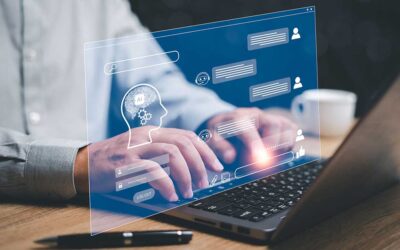Skills for Special Librarians: Tips for Giving a Presentation
Lauren Hays
Giving presentations is a big part of my job. Over the years, I have learned a few things that have helped me feel more comfortable both developing the presentation and then giving it. My tips are below.
Tips for developing presentations:
- Start with learning outcomes. In other words, decide the main things you want attendees at the presentation to learn.
- Design the slide deck around the learning outcomes; this helps ensure you cover the main ideas.
- Know your audience and tailor the presentation content to their backgrounds and needs.
- Include ways for interactivity. This could be in the form of questions you pose to the audience, a poll, an interactive whiteboard (i.e. Google Jamboard or Padlet), or audience discussion.
- Pick a slide theme that enhances the presentation and does not distract. This means including visuals that support the content.
- Make sure the font on each slide is readable at a distance.
- Write notes for each slide. I prefer to do this in the notes section for each slide.
- Leave time at the end for questions.
- Include a summary slide with the main ideas that you covered.
- Keep track of references and include a slide at the end with the list.
- Proofread the presentation!
- Practice the presentation before delivering it to an audience.
Tips for giving a presentation
- Welcome the audience and thank them for being in attendance.
- Use a natural pace and do not rush.
- Do your best to stick to a schedule so you do not run out of time or end too early.
- Use notes and do not read the presentation.
- Keep eye contact with audience members.
- Calmly move during the presentation, but try to avoid pacing.
- Enjoy sharing a topic you are passionate about!
I hope you find these tips beneficial for your own work.
Lauren Hays
Lauren Hays, PhD, is an Assistant Professor of Instructional Technology at the University of Central Missouri, and a frequent speaker on topics related to libraries and librarianship. Her professional interests include information literacy, educational technology, library and information science education, teacher identity, and academic development. Please read Lauren’s other posts about skills for special librarians. And take a look at Lucidea’s powerful integrated library systems, SydneyEnterprise, and GeniePlus, used daily by innovative special librarians in libraries of all types, sizes and budgets
Never miss another post. Subscribe today!
Similar Posts
Balancing Human Oversight with AI: Tips for Special Librarians
Special librarians can use AI without losing expert control. Use this practical checklist to verify accuracy, bias, sources, licensing, and fit.
End-of-Calendar-Year Reflections for School Librarians
The end of the calendar year offers school librarians a chance to reflect on what’s working, make thoughtful adjustments, and plan for the year ahead.
Library Instruction: Learning Styles Are Out, Evidence-Based Practices Are In
For instructors and educators of all types, it’s vital to realize that evidence-based practices are more effective than catering to the myth of learning styles.
Interview with Susan Walsh:
Dirty Data, AI, and the 2nd Edition of “Between the Spreadsheets”
Author Susan Walsh discusses the new edition of “Between the Spreadsheets,” sharing insights on fixing dirty data, AI’s impact, and her COAT framework.




Leave a Comment
Comments are reviewed and must adhere to our comments policy.
0 Comments